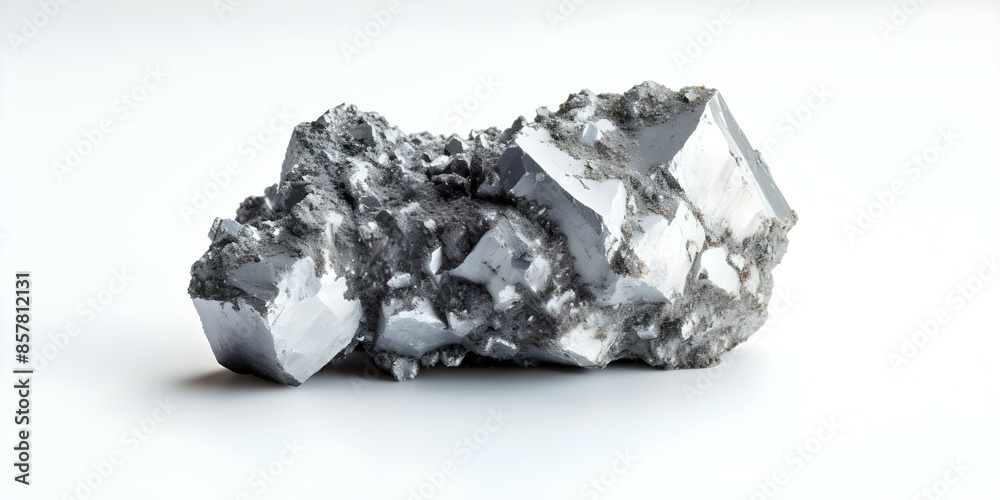Dysprosium: The Rare Earth Element Disrupting The EV Industry

Table of Contents
The Crucial Role of Dysprosium in EV Motors
Dysprosium is a key component in neodymium magnets, which are essential for the high-power, high-torque performance of electric vehicle motors. These permanent magnets are crucial for efficient energy conversion and overall vehicle performance. Without the unique properties of dysprosium, these magnets would be significantly weaker and less effective, impacting the range, efficiency, and power of electric vehicles.
- Improves the magnetic strength and thermal stability of neodymium magnets. Dysprosium's addition significantly enhances the magnet's resistance to demagnetization at high temperatures, a crucial factor in the demanding operating conditions of an EV motor.
- Enables smaller, lighter, and more powerful motors. The superior magnetic properties afforded by dysprosium allow for the design of more compact and efficient motors, contributing to better vehicle performance and fuel efficiency.
- Contributes to increased efficiency and range in EVs. By enhancing motor efficiency, dysprosium magnets directly impact the overall range and energy consumption of electric vehicles.
- Reduces reliance on less efficient motor designs. The use of dysprosium in neodymium magnets allows for the implementation of more advanced motor designs that would not be feasible without its unique magnetic properties.
The Challenges of Dysprosium Supply and Sustainability
Dysprosium's rarity presents significant challenges to the widespread adoption of electric vehicles. The majority of the world's dysprosium supply is concentrated in a few countries, primarily China, creating geopolitical risks and vulnerabilities in the EV supply chain. This dependence creates potential for price volatility and supply disruptions, jeopardizing the growth of the EV industry. Furthermore, mining and processing rare earth elements, including dysprosium, can have significant environmental consequences.
- Geopolitical dependence on specific countries for dysprosium. This concentration of supply creates significant geopolitical risks and potential for trade disputes impacting the availability and price of dysprosium.
- Environmental concerns associated with rare earth mining. The mining and processing of dysprosium can lead to environmental damage, including habitat destruction, water pollution, and greenhouse gas emissions.
- Limited recycling infrastructure for dysprosium. Currently, the recycling of dysprosium from end-of-life EVs and other applications is limited, exacerbating the reliance on primary mining.
- Ethical concerns regarding mining practices in certain regions. Concerns exist regarding labor practices and environmental regulations in some regions where dysprosium is mined.
Exploring Alternatives and Solutions for Dysprosium Dependence
Researchers and engineers are actively exploring alternative magnet designs and materials to reduce reliance on dysprosium. Efforts are also focused on improving dysprosium recycling technologies and promoting sustainable sourcing practices. A multifaceted approach is crucial to ensure the long-term viability of the EV industry.
- Development of dysprosium-free or dysprosium-reduced magnets. Scientists are actively investigating alternative materials and magnet designs that minimize or eliminate the need for dysprosium.
- Improved magnet design to optimize dysprosium usage. Optimizing the design of neodymium magnets can reduce the amount of dysprosium required while maintaining performance.
- Advancements in dysprosium recycling and recovery technologies. Developing efficient and cost-effective methods for recycling dysprosium from end-of-life products is crucial. This includes urban mining, a process of recovering valuable materials from discarded products.
- Promoting responsible sourcing and ethical mining practices. Encouraging sustainable and ethical mining practices is vital to reduce the environmental and social impact of dysprosium extraction.
The Future of Dysprosium in the EV Industry
The future of dysprosium's role in the EV industry hinges on a multi-faceted approach. This includes developing alternative materials, improving recycling technologies, securing sustainable supply chains, and fostering international cooperation to ensure a stable and ethical supply of this critical rare earth element. Success will depend on collaborative efforts across industry, government, and research institutions.
Conclusion
Dysprosium's critical role in the electric vehicle industry cannot be overstated. While its scarcity and the challenges associated with its supply chain present significant hurdles, ongoing research and development efforts aimed at finding alternatives, improving recycling, and ensuring sustainable sourcing are crucial for a truly green and sustainable EV future. Understanding the complexities surrounding dysprosium is vital for navigating the challenges and ensuring the continued growth and success of the electric vehicle revolution. Learn more about the impact of dysprosium and other rare earth elements on the future of electric mobility and contribute to finding solutions for a sustainable future.

Featured Posts
-
 Louisville Faces Major Flooding After Tornado State Of Emergency Declared
Apr 29, 2025
Louisville Faces Major Flooding After Tornado State Of Emergency Declared
Apr 29, 2025 -
 Akesos Clinical Trial Failure Sends Stock Prices Tumbling
Apr 29, 2025
Akesos Clinical Trial Failure Sends Stock Prices Tumbling
Apr 29, 2025 -
 New Information Surfaces Regarding Helicopter Plane Incident Near Reagan Airport
Apr 29, 2025
New Information Surfaces Regarding Helicopter Plane Incident Near Reagan Airport
Apr 29, 2025 -
 Porsches New Macan Ev Electric Drive Experiences Unveiled
Apr 29, 2025
Porsches New Macan Ev Electric Drive Experiences Unveiled
Apr 29, 2025 -
 You Tube A New Home For Older Viewers Favorite Tv Shows
Apr 29, 2025
You Tube A New Home For Older Viewers Favorite Tv Shows
Apr 29, 2025
